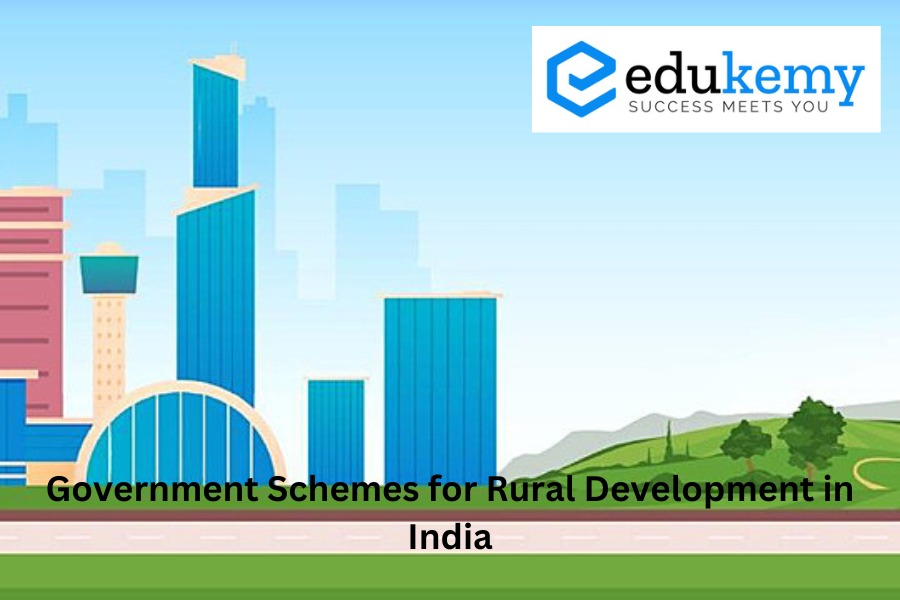
In the vast tapestry of India’s socio-economic landscape, the rural countryside holds a pivotal position. Home to a significant portion of the population, rural areas have long been the focus of various governmental initiatives aimed at uplifting communities, fostering sustainable development, and reducing disparities. From infrastructure to agriculture, healthcare to education, a plethora of schemes have been devised over the years to address the multifaceted challenges faced by rural India. In this blog post, we delve into some of the key government schemes that are shaping the future of rural development in India.
Contents
- 1 KEY FEATURES
- 2 FAQs
- 2.1 Q: What is the eligibility criteria for availing benefits under MGNREGA?
- 2.2 Q: How can rural households apply for assistance under PMAY-G?
- 2.3 Q: What kind of skill training programs are offered under DDU-GKY?
- 2.4 Q: How can rural youth access skill training under DDU-GKY?
- 2.5 Q: Are there any incentives for promoting toilet construction under Swachh Bharat Mission (Gramin)?
- 3 In case you still have your doubts, contact us on 9811333901.
KEY FEATURES
Mahatma Gandhi National Rural Employment Guarantee Act (MGNREGA):
MGNREGA, launched in 2005, stands as one of the world’s largest social security schemes. It guarantees 100 days of wage employment in a financial year to every rural household whose adult members volunteer to do unskilled manual work. By providing employment opportunities, MGNREGA not only enhances livelihood security but also contributes to rural infrastructure development, such as the construction of roads, water conservation structures, and rural connectivity.
Pradhan Mantri Awaas Yojana (PMAY-G):
Housing is a fundamental need, and PMAY-G aims to provide ‘housing for all’ by 2022. Under this scheme, financial assistance is provided for the construction of houses to eligible rural households living without pucca houses. PMAY-G not only focuses on the construction of houses but also emphasizes the use of sustainable and eco-friendly construction techniques, ensuring durability and resilience.
National Rural Livelihood Mission (NRLM):
NRLM, launched in 2011, aims to alleviate rural poverty by enabling rural households to access sustainable livelihood opportunities. It focuses on organizing rural poor into self-help groups (SHGs) and federating them into higher-level institutions. NRLM provides support for skill development, access to credit, market linkages, and entrepreneurship development, thereby empowering rural communities to become self-reliant.
Pradhan Mantri Krishi Sinchayee Yojana (PMKSY):
Agriculture forms the backbone of rural India, and PMKSY seeks to enhance water availability for agricultural purposes through efficient water management practices. The scheme encompasses various components such as ‘Per Drop More Crop,’ promotion of micro-irrigation, watershed development, and sustainable on-farm water management practices. By improving water use efficiency, PMKSY aims to boost agricultural productivity and farmers’ income.
Deen Dayal Upadhyaya Grameen Kaushalya Yojana (DDU-GKY):
Skill development is crucial for unlocking the potential of rural youth and enhancing their employability. DDU-GKY focuses on providing market-oriented skill training to rural youth aged 15-35 years. The scheme emphasizes placements in wage employment or self-employment ventures, thereby enabling rural youth to secure sustainable livelihoods and contribute to the economic growth of their communities.
Swachh Bharat Mission (Gramin):
Access to sanitation and hygiene facilities is essential for improving the quality of life in rural areas. Swachh Bharat Mission (Gramin) aims to achieve universal sanitation coverage and eradicate open defecation in rural India by constructing toilets, promoting behavioral change, and ensuring the sustainable management of solid and liquid waste. By promoting cleanliness and hygiene practices, the scheme aims to prevent diseases and improve overall well-being.
FAQs
Q: What is the eligibility criteria for availing benefits under MGNREGA?
Eligibility for MGNREGA benefits is based on several criteria, including:
Being a rural household.
Adult members willing to do unskilled manual work.
Registration at the local Gram Panchayat or block office.
Priority given to households belonging to Scheduled Castes (SCs), Scheduled Tribes (STs), and women.
Q: How can rural households apply for assistance under PMAY-G?
Rural households can apply for assistance under PMAY-G through the following steps:
Visit the nearest Gram Panchayat or rural development office.
Fill out the application form with accurate details.
Provide necessary documents such as Aadhaar card, income certificate, and land ownership documents.
The application will be verified, and eligible beneficiaries will receive financial assistance for constructing houses.
Q: What kind of skill training programs are offered under DDU-GKY?
DDU-GKY offers skill training programs in various sectors, including:
Agriculture and allied activities.
Healthcare.
Retail.
Construction.
Hospitality.
Information technology.
Textiles and garments.
Training programs are tailored to meet local employment demands and focus on building relevant skills for sustainable livelihoods.
Q: How can rural youth access skill training under DDU-GKY?
Rural youth can access skill training under DDU-GKY through the following steps:
Enroll in a DDU-GKY training center or partner institution.
Participate in skill development courses aligned with their interests and local employment opportunities.
Upon completion of training, receive certification and assistance in securing employment or starting a self-employment venture.
Q: Are there any incentives for promoting toilet construction under Swachh Bharat Mission (Gramin)?
Yes, Swachh Bharat Mission (Gramin) offers incentives to promote toilet construction, including:
Financial assistance for constructing individual household toilets.
Incentives for behavior change communication activities promoting toilet usage and sanitation practices.
Awards and recognition for villages achieving Open Defecation Free (ODF) status.
In case you still have your doubts, contact us on 9811333901.
For UPSC Prelims Resources, Click here
For Daily Updates and Study Material:
Join our Telegram Channel – Edukemy for IAS
- 1. Learn through Videos – here
- 2. Be Exam Ready by Practicing Daily MCQs – here
- 3. Daily Newsletter – Get all your Current Affairs Covered – here
- 4. Mains Answer Writing Practice – here

